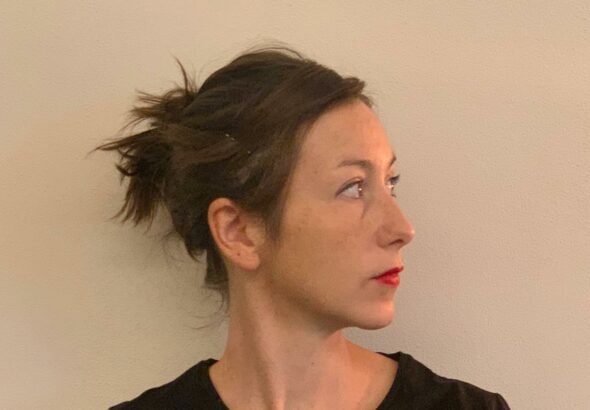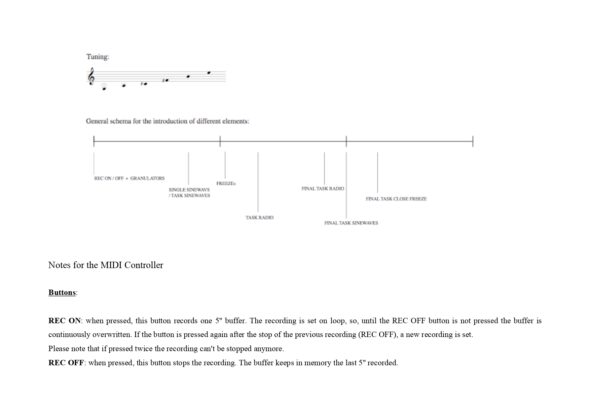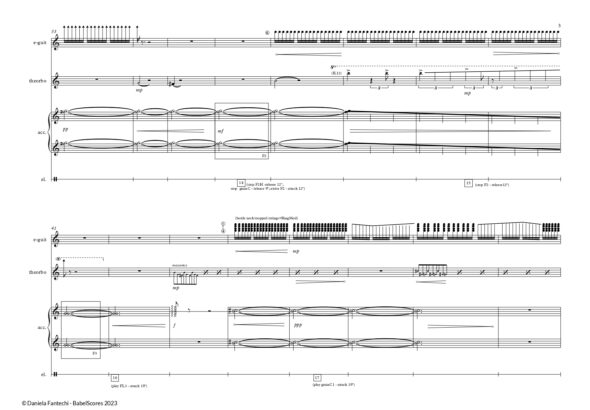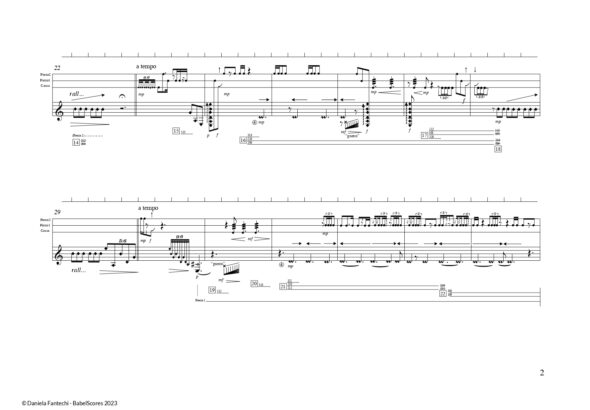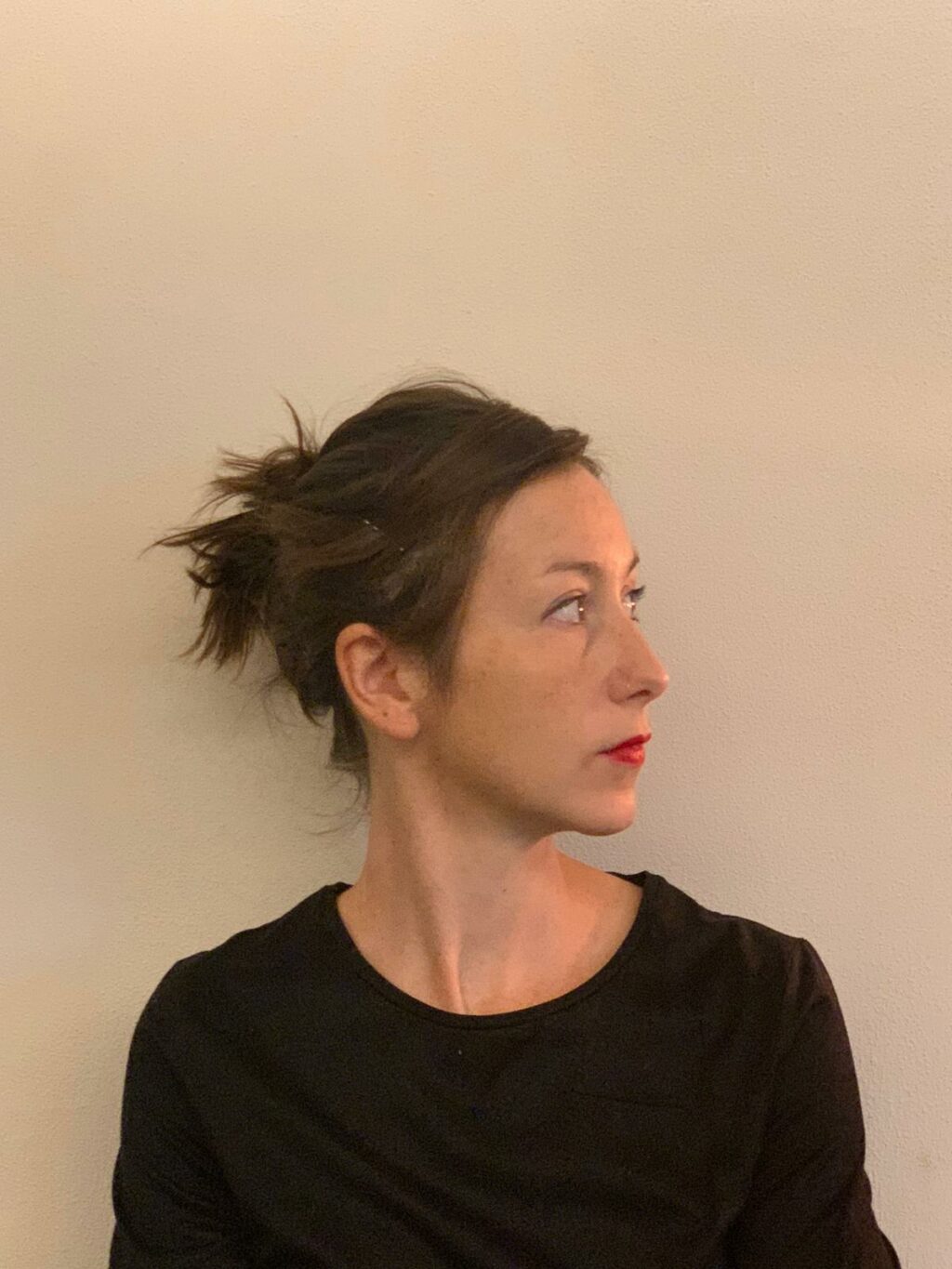
Daniela Fantechi (*1984) is a composer, performer, and researcher from Florence. Her works have been performed in Italy, Austria, Spain, Germany, Portugal, England, France, Switzerland, and Belgium. She has participated in artistic residencies for Kultur Kontakt in Vienna and St.A.I.R. in Graz. She is a founding member of the collective Blutwurst and an electronic performer for the Azione_Improvvisa Ensemble. A graduate in musicology, she also has strong expertise in music pedagogy.
In this interview, we will explore her multifaceted artistic activity, with a particular focus on the creative use of piezoelectric microphones, a distinctive element of her sound research, and the subject of her PhD at the Orpheus Institute in Ghent.
Hi Daniela, and thank you for accepting our invitation.
Your musical activity is multifaceted and operates on various levels: composer, performer, researcher. Could you tell us about your compositional research in recent years and how the use of piezoelectric microphones has influenced your creative process? How has this technology expanded your expressive possibilities?
A few years ago, I became interested in piezoelectric microphones and the possibilities related to their use in connection with acoustic instruments. One of the aspects that struck me the most, and on which I’ve kept a strong focus, is the shift in listening perspective: using a piezoelectric microphone on an acoustic instrument activates a listening experience mediated by a unique technology, which brings the sound extremely close. The instrumental sound material is framed in a listening experience that could be described as “stethoscopic,” where piezoelectric microphones are not just used to amplify otherwise imperceptible sounds, but also to produce a different kind of sound material through the reinterpretation of instrumental gestures, such as glissandos, repeated notes, etc.
The piece Et Ego, for classical guitar and live electronics, was your first approach to the classical guitar, where you explored various unconventional aspects of the instrument, including different percussive sounds and entire textures of inharmonic sounds, generated in various ways. How did you come to the idea of exploring the classical guitar in this unconventional way?
My compositional research is primarily centered on exploring unconventional sounds and the possibilities of combining heterogeneous sounds, such as more percussive sounds with those where the frequency component is predominant. In this sense, my work continues the exploration of extended techniques in 20th-century music, with particular reference to the work of Helmut Lachenmann and his concept of musique concrète instrumentale.
In Et Ego, two piezoelectric microphones are attached to the body of the guitar to amplify the instrument, allowing for the production of extremely subtle sounds, both on the strings and on the body. The use of piezos creates a kind of hyper-amplification that enabled me to play with very small, varied gestures (taps, slides, scratches, etc.) across the entire surface of the guitar, including tapping on the piezo itself. Additionally, I worked on small fragments from Tristis est anima mea, from Gesualdo da Venosa’s Tenebrae Responsoria, characterized by peculiar chromaticisms. And since the guitar cannot produce sustained sounds, I used electronics, which activate freezes on certain notes, creating slow changes in texture through the layering of long, sustained tones.
In “Hidden Traces,” also for classical guitar, your sonic exploration goes even further, involving parts of the instrument that are usually not utilized. The piezoelectric microphones, in this case, become not only a means of amplification but true tools for sonic exploration. Could you tell us about the genesis of this piece and its unique features?
This work was conceived for a performance in an art gallery. Here, the guitar and electronics create a closed system through the use of two piezoelectric microphones and two transducers placed on the soundboard, amplifying the guitar’s sound through the instrument itself. The two piezos serve different purposes. The first is fixed to the guitar’s soundboard and functions as an amplifier and a listener for the electronics. The second piezo is mobile and controlled by the performer, who uses it to explore the instrument with a variety of possible gestures. The piezo is used like a stethoscope that listens and brings forth a sonic material that comes alive within the instrument.
The musical gestures interacting in this piece can be divided into three different types:
- Sounds produced through the use of the mobile piezo — percussive or more “noisy” sounds — that can undergo electronic manipulation through various types of granulators.
- Sinusoidal sounds, electronically generated, that resonate through the entire vibrating body of the instrument via the transducers.
- Radio sounds (taken from the RadioGhetto project, https://soundcloud.com/radio-ghetto) which are activated at specific moments, related to the dynamics of the piezo gestures.
This third category represents the “hidden traces” within the sonic fabric.
Several pieces in your repertoire feature the electric guitar. What aspects of this instrument fascinate you the most? And what potential do you think still awaits to be explored?
As an active member of the Azione_Improvvisa ensemble (accordion, electric guitar, theorbo, and electronics), I have the privilege of observing this instrument closely and writing for electric guitar through direct collaboration. In the works I’ve composed for this unique ensemble, I’ve primarily focused on combining and creating blended timbres, using the electric guitar as part of the overall sound texture.
There are certainly many potentials I would still like to explore, particularly in the realm of pedals and effects, which I have not yet delved into deeply enough.
You’ve never explored the use of piezoelectric pickups in your compositions for electric guitar. Is there a reason behind this choice? Do you think there’s room for research in this direction, similar to what you’ve done with acoustic instruments?
The reason I’ve never used piezo pickups with the electric guitar is that my interest in this technology originated from, and has been focused on, the possibilities of making an inherently acoustic instrument “electronic.” My works with piezos, in addition to the two mentioned for acoustic guitar, have been written for piano, string instruments, and percussion. However, I don’t rule out the possibility of exploring piezo pickups with electric guitar in the future.
In addition to being a composer, you’re also active as a performer, both with electronics in Azione_Improvvisa and with accordion and piano in Blutwurst. How does your experience as a performer influence your approach to composition? How do these two facets nurture each other?
My work as a performer definitely plays a crucial role in my compositional process. On one hand, it allows me to become more intimately familiar with the instruments, as well as to engage directly with the practical aspects of performance. On the other hand, it challenges my role as a composer in the traditional sense. This happens especially in my work with the ensemble Blutwurst, where the pieces are collective creations. Here, my compositional skills are placed at the service of a group’s collective thought process, where different but similar musical personalities come together. This exchange allows me to grow and enriches my work.
To conclude, could you give us a preview of your future projects? What are you currently working on?
At the moment, I’m working on a solo piece for accordion and starting to plan an electroacoustic installation.
